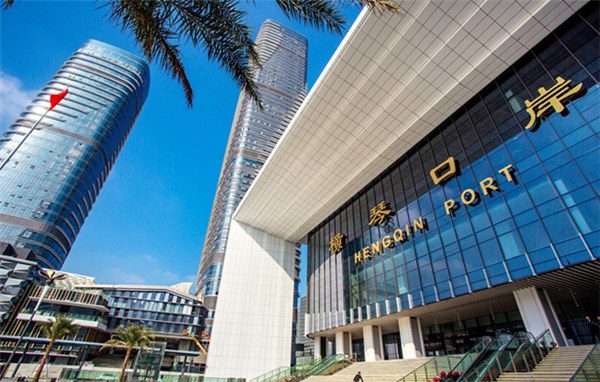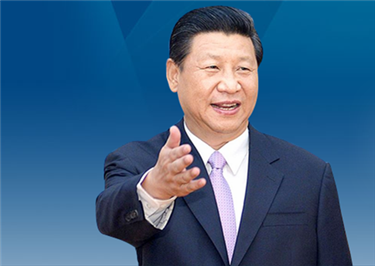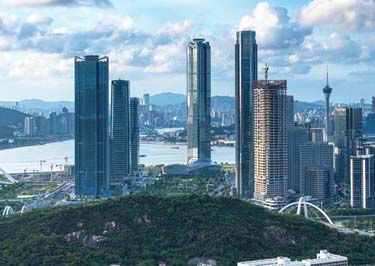Zhuhai tenacious in forging Greater Bay infrastructure
Two years since and even prior to adoption of the Feb 18, 2019 Development Plan for the Guangdong-Hong Kong-Macao Greater Bay Area (GBA), Zhuhai has been unrelenting in boosting infrastructure connectivity, sci-tech innovation, and cooperation with Macao.
In fact, progress was already being made during the 13th Five-Year Plan period (2016-20). Then, the city government invested 60.85 billion yuan ($9 billion) in 43 key transport projects. This became evident last December as the Honghe Bridge, Jinqin Express Road, Meihua-Zaobei interchange section of Xianghai Bridge, and section between the Jiangmen-Zhuhai Expressway and East Airport Road of the Hezhou-Gaolan Port Expressway opened to traffic, further integrating Zhuhai into the GBA one-hour traffic circle.
Zhuhai's Comprehensive Transport Development during the 14th Five-Year Plan period (2021-25) proposes further strengthening the city as a GBA transport hub offering efficient connectivity with Hong Kong, Macao, the east bank of the Pearl River Estuary, and western Guangdong.
For instance, this year the city will advance 79 major transport projects at a cost of 16.47 billion yuan ($2.5 billion). The Xianghai Bridge main line as well as the first phases of Jinqin Express Road's north extension line and Hezhou-Gaolan Port Expressway are among 12 projects scheduled to begin operation.
Meanwhile, 16 projects will come under construction. Included are the Gaolan Port Expressway north extension line, Xianghai Bridge west extension line, and local sections of Zhuhai-Zhaoqing and Guangzhou-Zhuhai (Macao) high-speed railways. Preliminary work is being done on the Nansha-Zhuhai (Zhongshan) Intercity Railway, while the Zhuhai Airport Urban Rail Transit Phase II is being completed.

New Hengqin Checkpoint [Photo provided to chinadaily.com.cn]
Over the past two years, Zhuhai has adopted incentive policies and added scientific innovation carriers to support the GBA as an international scientific innovation center. Along these lines, the University of Macau and Macau University of Science & Technology have set up four State Key Laboratory branches in Hengqin New Area.
In addition, Phase I of the Hengqin Advanced Intelligent Computing Center is operating. A tunnel for the Superstatic Cave Laboratory of the Tianqin Space-based Gravitational Wave Research project beneath Fenghuang Mt in Tangjiawan was bored through last June and will be delivered to Sun Yat-sen University upon furnishing and being equipped.
Nearby, the Southern Marine Science & Engineering Guangdong Laboratory (Zhuhai) entered the fast track for development relying on Zhuhai's unique marine resources and cooperation with 30 institutions and enterprises.
By the end of 2020, Zhuhai housed more than 2,200 hi-tech enterprises, many of them mature or seeded unicorns. The city also had 16 provincial new-type R&D institutions, four national and 284 provincial engineering research centers, as well as 18 sci-tech enterprise incubators and 17 maker spaces above provincial level.
Projects of tech giants such as Tencent, Huawei, and 360 have settled in Zhuhai, seeking in-depth cooperation in AI innovation and application, cloud computing and data service, and talent exchange and cultivation.
Zhuhai places 11th among 289 domestic cities (2nd among those of prefecture level and 1st among 96 medium-sized ones) in the 2020 Sci-Tech Innovation & Development Report of Chinese Cities issued by Capital Institute of Science & Technology Development Strategy and City & Competitiveness Research Center of the Chinese Academy of Social Sciences in January.
Connectivity with Macao has been deepened with the opening of the new Hengqin Checkpoint, while Macao New Neighborhood is being constructed to provide 4,000 units to house Macao people, along with livelihood facilities and public services they are accustomed to.
Moreover, industrial cooperation has been enhanced in sci-tech innovation, characterized finance, medical treatment and healthcare, cross-border commerce and trade, culture-tourism and convention-exhibition, and professional services.
As of now, Zhuhai houses more than 6,000 Macao-funded enterprises, all backed by an optimized business environment. Of them, over 3,500 are registered in Hengqin, and 167 have cross-border offices there. Nine thousand Macao employees are covered by Zhuhai medical insurance. Macao architects, tour guides, and social workers are permitted to practice in Hengqin, and 5,000 Macao single-plate vehicles may enter the island.
More Macao projects and employees are expected to flow in through the Traditional Chinese Medicine Science & Technology Industrial Park of Cooperation Between Guangdong & Macao and Hengqin Science City.
To improve lifestyles, Zhuhai has dedicated its most desirable sites to parks and designated ideal spaces for public architecture such as the Opera House on Yeli Island and Zhuhai Museum & Planning Exhibition Hall adjoining Sea & Sky (Haitian) Park in Old Xiangzhou.
By the end of 2020 Zhuhai had 733 parks of various types. Already, residents can reach a green space within a radius of 300 m (328 yd) of their homes, community park within 500 m (547 yd), comprehensive park within 5 km (3 miles), and outskirt forest park within 10 km (6 miles).
Zhuhai has increasingly appealed to talents with streamlined administrative procedures, infrastructure, medical insurance, education, elder care, culture, and supportive policies such as the Zhuhai Talent Program. Last year, 56,000 talents were attracted, and the net talent flow rate was among the best in the country.







